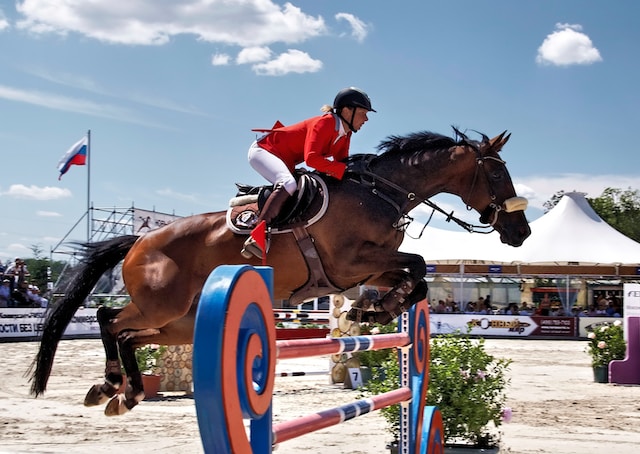
Navigating the Common Horse Jump Accessories
Show jumping requires specific equipment and tack to ensure horse and rider safety. Higher levels of competition, such as the Grand Prix, often include obstacles that have increased height and width (spread) to present more significant challenges. These also feature tighter turns or shorter distances between fences.
Stirrup Leathers And Stirrup Irons
You need stirrup leathers that match your boots for jumping and hunting disciplines. When buying horse jump accessories near me or stirrup leathers, measure the inseam of your boots at the ball of the foot and add a few inches for the height of your iron. This technique helps you get the right size of leather, avoiding them from twisting and getting caught under your leg.
You can choose from monostraps or multi-strap stirrup leathers. The latter offer less bulk under your leg and are easier to mount. They also feature a low stirrup buckle that prevents discomfort under your thigh.
A snaffle bridle is commonly used in jumping and hunting, enabling you to communicate more directly with your horse. You can opt for a double or Weymouth bridle for more refined control and communication. Correct stirrup lengths vary by discipline and are critical to supporting your position and riding effectiveness. For example, longer dressage stirrup leathers allow riders to hang their legs long against the horse’s side for optimal contact.
Martingales
A martingale is an adjustable strap that attaches to the girth and runs through a ring on the noseband of your horse’s bridle. It applies pressure to the noseband when your horse raises its head too high, encouraging it to drop its head. This helps you gain more control over the horse’s head carriage and allows you to ride with less pressure on the reins.
Running martingales are acceptable for all categories of show jumping while standing martingales can only be used in CSI(O)Ch classes. Both require a rubber martingale stop, which looks like a donut and keeps the rings from sliding down the reins to the bit or getting stuck next to the mouth.
However, martingales should only be used with a horse that has been properly trained. Using one on an untrained horse may cause them to panic and over-flex their neck muscles or vertebrae.
Boots Or Bandages
Boots protect the horse’s lower legs and feet. They come in various sizes and materials, from leather to neoprene or even kevlar. The primary use is to minimize interference injuries caused by a narrow, stubby leg interfering with its fetlock or the inside of another foot. These injuries are more common with horses with conformational faults and those performing lateral work such as jumping.
In addition to interfering with injuries, boots can offer protection from bruising, banging against fences, or hitting their limbs on objects such as bushes or the inside of trailers and lorries during transportation. However, studies have shown that boots restrict the full range of motion of a horse’s leg and can increase their temperature by 30%–leading to cell death and inflammation. Choose boots with openings that allow good airflow to keep your horse’s temperature down.
Breastplates
A breastplate (a chest strap or breast girth) is an essential task that helps keep your saddle from sliding back during jumps. The style of breastplate you choose depends on your discipline, and one that works with a martingale can make it more secure.
The classic English breastplate sometimes called a stockman’s or hunting breastplate, has a “Y” shape and includes a chest strap that buckles to one of the billets under your saddle, a yoke with a wither strap, and two straps at the top of the yoke that attach to the saddle girths. This style is worn by endurance horses, hunters, eventers, and show jumpers.
The girth called the cinch, is fastened snugly around your horse’s belly and under his front legs. It is typically made of thick and durable leather or synthetic materials. It can have a straight or contoured design and may include a martingale.





